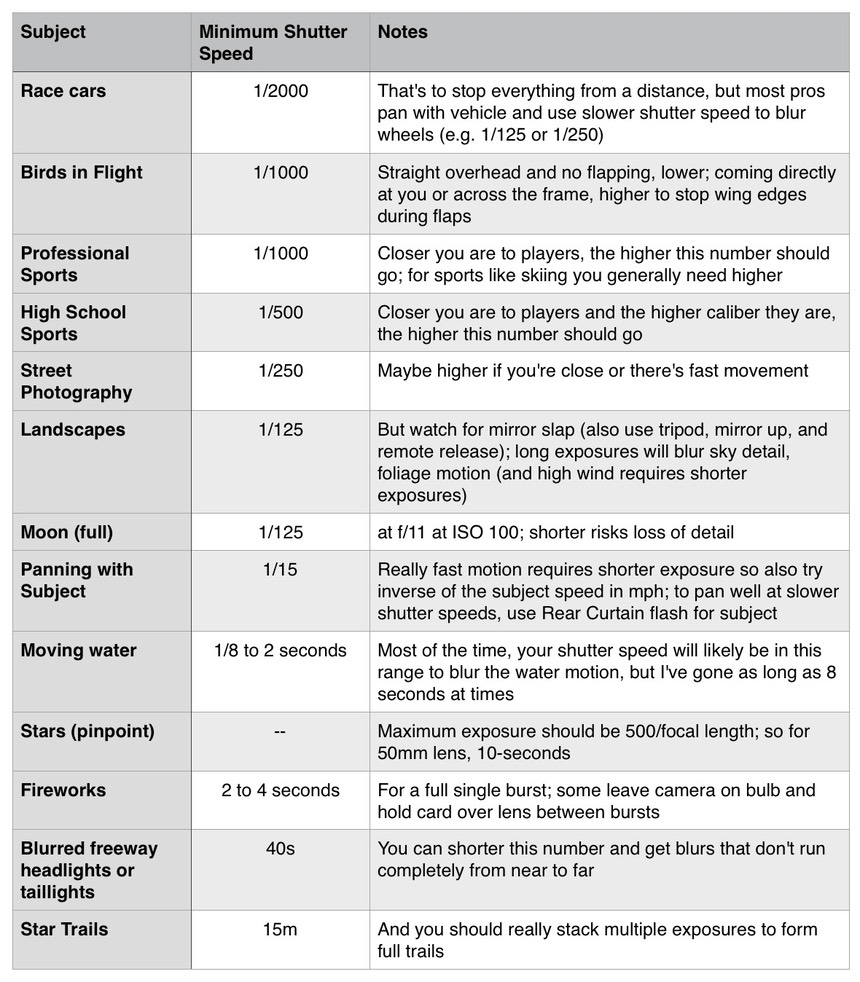The first photography book I wrote had a number of tables in it dealing with shutter speeds (e.g. Nikon Field Guide, page 51).
The tricky part is that proper motion-stopping shutter speeds are dependent upon a bunch of things. For instance, the focal length used, the subject's speed, the distance to the subject, and the direction of the movement. For a 50mm lens on an FX (full frame) camera, that would be something like this (double the speeds for a 100mm lens, halve them for a 24mm lens to get approximates):

Eek. That's a lot of stuff to remember, and you'd need a huge barrel of charts in order to "nail it."
For that reason, most pros use some simple short-hands for various subjects:

Other things you should think about with shutter speeds are these:
- Minimum hand-holdable speed for someone using good technique is generally 1 / (focal_length*crop_from_full_frame). Yes, turning on image stabilization can help you go below this threshold, but please read my article on Nikon VR (and this one too).
- Shutter slap is real—even on mirrorless cameras—and can make for less than optimal results when it occurs. Generally this seems to occur in the 1/15 to 1/250 shutter speeds most of the time, but it varies from camera to camera, and a poor support system can amplify the problem. Even longer than 1/15 shutter speeds can be be suboptimal in some cases, as you get a false edge on everything from the slap period. So any time you drop below 1/250 you should be asking yourself if you expect shutter issues, and if so, use electronic first curtain shutter, mirror up, or exposure delay and make sure that your support system is not echoing any slap, but instead absorbing and dissipating it. For static subjects with camera on tripod, use Front Electronic Curtain Shutter if your camera has it.
